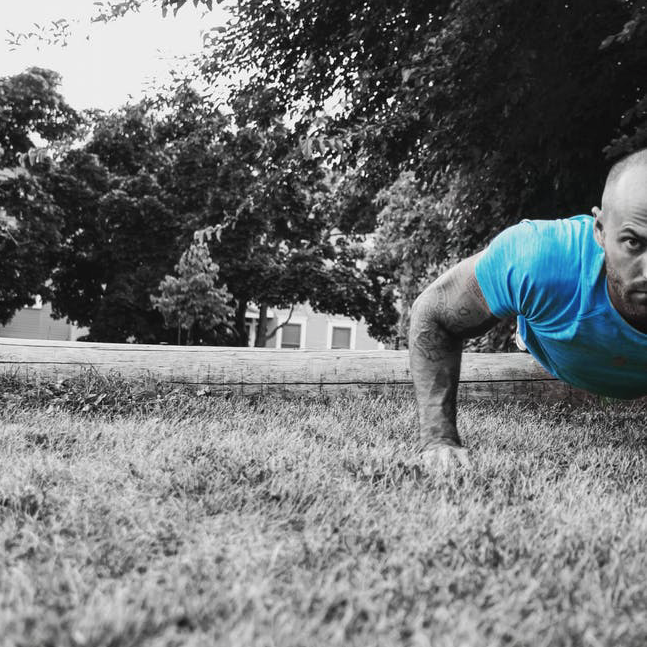Sperm Boot Camp
Welcome to Sperm Boot Camp
Optimized sperm numbers and quality requires an good environment for sperm production to take place in along with the right genetic and hormonal inputs as well. The Sperm Boot Camp is designed to enhance the body's sperm production environment by addressing a number of key lifestyle risk factors and making sperm-friendly health recommendations that can have a positive impact on sperm numbers and quality.
Sperm Boot Camp focuses on non-medical, non-invasive interventions that can potentially benefit all men who are actively trying to conceive, whether their fertility testing (such as the semen analysis) have been normal or abnormal. Working through the Sperm Boot Camp is a self-guided process, though certain risk factors (such as tobacco use cessation) can be assisted with the help of your medical care provider. For men who do have abnormal fertility test results, addressing the man's medical risk factors through the "Medical Optimization Program" can be potentially beneficial as well.
Just like with exercise, any improvements must be maintained with continued "practice". We recommend that the modifications made during Boot Camp be maintained ideally until your wife/female partner is pregnant and through her first trimester. You would not expect just 4 weeks of exercise work-outs to improve your overall health, and only 4 weeks of taking antioxidants or avoiding hot tubs is not going to greatly impact the overall quality of your sperm.
The Sperm Boot Camp is not designed to be easy. It takes real commitment and perseverance to optimize your capacity to produce the best quality of sperm possible. However, the payoff of increasing your chances of having a healthy baby is well worth all the effort.
Getting Started With Boot Camp
The first step is for the man to fill out the "Personal Fertility Profile" form by clicking on the link below. Please complete the Personal Fertility Profile form, and then print it out (and/or save it to your computer to keep a personal electronic copy). One question on the form asks about your Body Mass Index (BMI)- please see the link below for a BMI calculator if you need assistance in calculating this.
For any of the risk factors that you marked "Yes" for, there is a corresponding Sperm Boot Camp section listed to the right on the Profile form. Once the form has been completed and printed out, you can then go and review the Boot Camp sections that are pertinent to your particular situation for recommendations on how to effectively manage these risk factors.
Upcoming Appointment with Your Medical Provider
If you are having an upcoming appointment with a medical care provider who is helping you to address your male fertility issues, please bring a copy of your completed Personal Fertility Profile for review at that appointment.
Common Sperm Boot Camp Questions
How long does Boot Camp last?
The human spermatogenic cycle is approximately seventy-five days (or a little over ten weeks). Any negative factors that can adversely impact semen parameters (such as sitting in a hot tub or using tobacco products) can potentially have a negative effect on all of the sperm in the body at the time. It generally then takes the body about ten weeks to completely replace all of the damaged batch of sperm with a new, undamaged batch of sperm. Along the same lines, any positive lifestyle changes (such as quitting smoking, decreasing alcohol intake, etc.) take at least one spermatogenic cycle (ten weeks) and sometimes two cycles (twenty weeks, or about five months) to be fully reflected in the semen parameters.
Do I need to put any treatments from the female side on hold while I go through Sperm Boot Camp?
No. As long as you have adequate semen parameters to start with, you do not necessarily need to delay any planned treatments from the female side while you complete the Sperm Boot Camp process. Some couples choose to wait the 10 weeks hoping that the potentially improved semen parameters may increase the chances of success of any female fertility interventions. However, some couples do not wish to delay the female fertility treatments, in which case the interventions from both the male and female sides can be undertaken simultaneously.
Do certain interventions help with specific fertility problems?
A common question I get is what negative factors influence particular semen parameters. For example, which lifestyle issues (e.g excessive alcohol, smoking) predominately impact a certain specific sperm problem, such as poor sperm motility. The bottom line is that most risk factors are going to have a different impact on each man’s individual fertility, and there is no way to accurately predict what these are going to be. Therefore, the goal is to try and improve the overall environment for sperm production by reducing as many risk factors as possible to get the highest number of good quality sperm.
Important Note
This website provides information on male infertility problems that is applicable to most, but not all men. Final decisions on treatments and management should be made with your personal medical provider taking into consideration your full medical history and situation.
